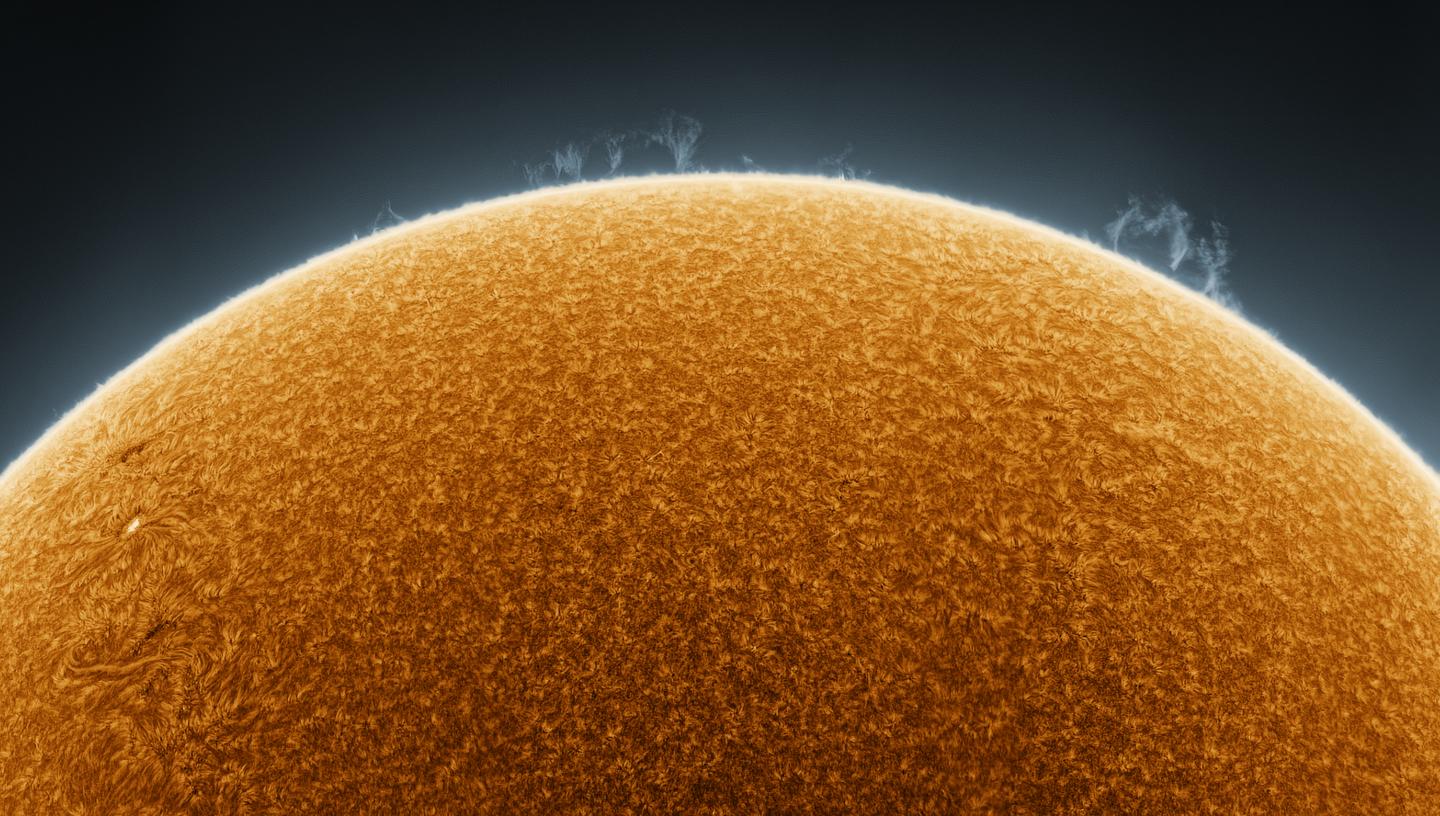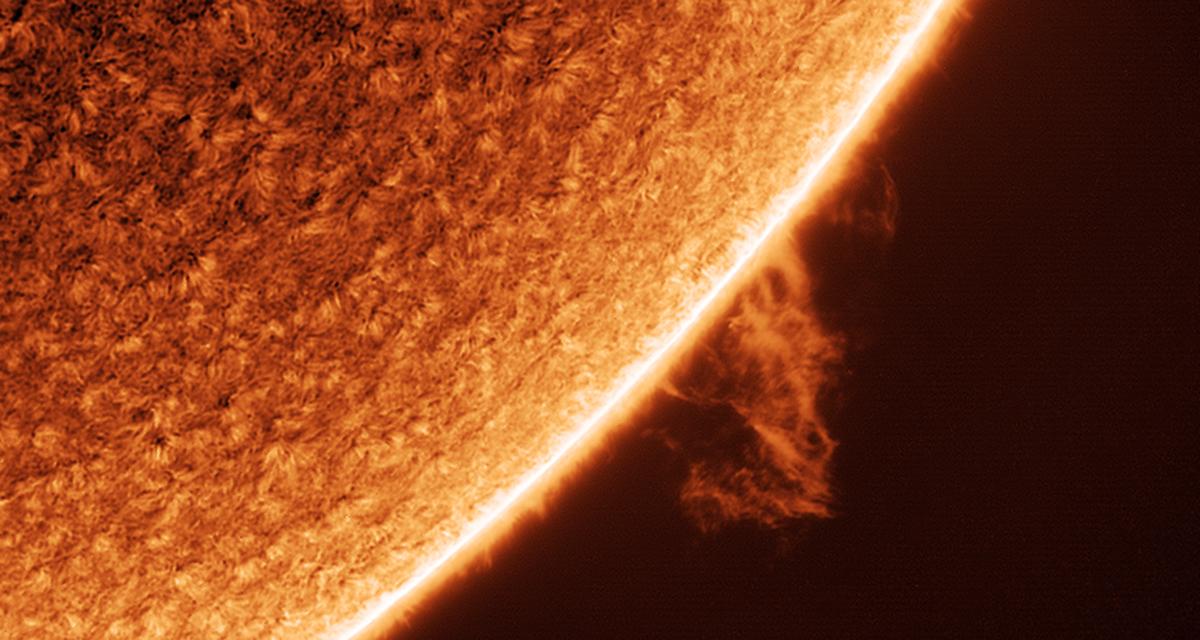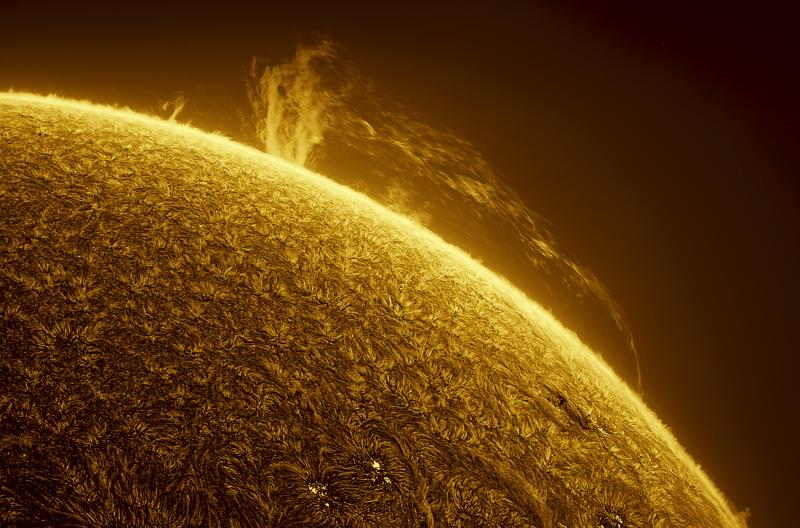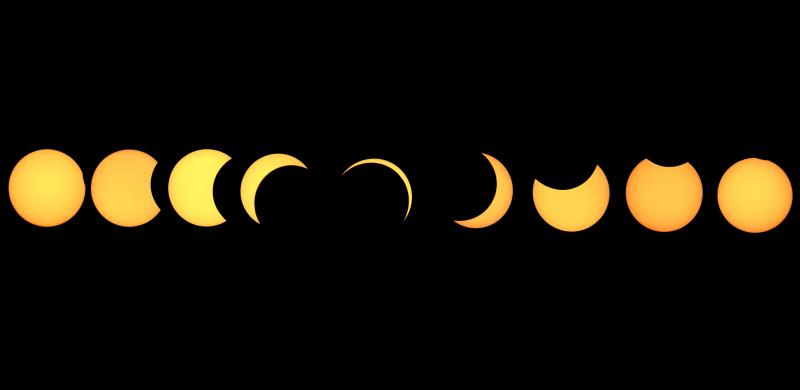
Sun facts
- The Sun is composed of almost 75% hydrogen and 25% helium.
- Less than 1% is made up of oxygen and several other elements.
- The diameter of the Sun is 1,400,000 km (840,000 miles), which is more than 100 times the diameter of the Earth.
The Sun’s diameter is 100 times that of Earth’s but its mass is 300,000 times greater and it is 15,000,000°C at its core.
Don't look directly at the Sun!
Never look directly at the Sun with a telescope or binoculars. It is extremely dangerous and can result in permanent blindness. It is also dangerous to look at a bright Sun with the naked eye.
A giant nuclear fusion power station
The source of energy in the Sun is the fusion of hydrogen nuclei (protons) into helium nuclei. This nuclear reaction can only take place in the very hot (15,000,000°C) and dense centre of the Sun. The Sun loses half a million tons every second in this destruction of mass to give energy but will maintain its present output for about 5000 million years.

The solar cycle
The Sun, as seen from the Earth, rotates about its axis once in just over 27 days and its activity rises and falls over an approximately 11 year cycle, producing variations in the Earth's magnetic field and changes in our upper atmosphere (the ionosphere) affecting the transmission of radio waves and therefore worldwide telecommunications.
These disturbed regions are seen as dark markings on the Sun's surface. Having a temperature of about 4800°C, they appear dark by contrast with the brighter surrounding surface, the temperature of which is 6000°C. The life of a sunspot can be as short as a few hours or as long as several months.

Solar flares
Usually associated with sunspots, these are observed as an increase in brightness of areas of hydrogen and can give rise to bursts of intense radiation in the ultra-violet region of the Sun's spectrum which cause sudden ionospheric disturbances and radio fadeouts, leading to disruption of telecommunications on the Earth's sunlit hemisphere.
Sometimes solar flares can be accompanied by coronal mass ejections, streams of electrically charged particles which affect the Earth’s magnetic field and cause geomagnetic ‘storms’. These storms can sometimes cause increased aurorae, the northern and southern lights.
Solar flares vary in size and intensity, the smallest lasting only a few minutes before the brightness begins to fade. These small flares produce negligible effects, but a large flare may last for several hours and produce partial or complete radio fadeouts for a corresponding period.
The death of the Sun
Eventually the hydrogen in the centre will all have been converted into helium. The balance between the force of gravity pulling all the Sun's mass towards its centre, and the force due to the energy in the Sun, which pushes matter outwards, will then be upset.
The centre will contract and become even hotter while the outer part will expand and become cooler. The Sun will then be brighter, cooler and bigger – a red giant star.
Ultimately all sources of energy production will come to an end and the Sun will collapse to become a very small hot object called a white dwarf.
Main Image: Rising Sun in False Colour by Siu Fone Tang, Astronomy Photographer of the Year 2021



